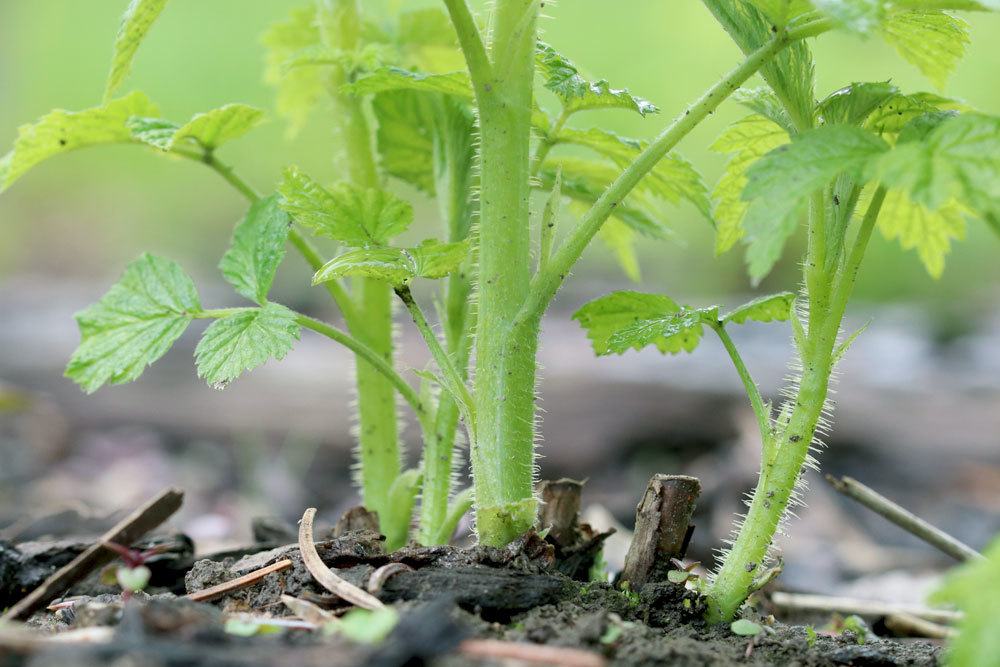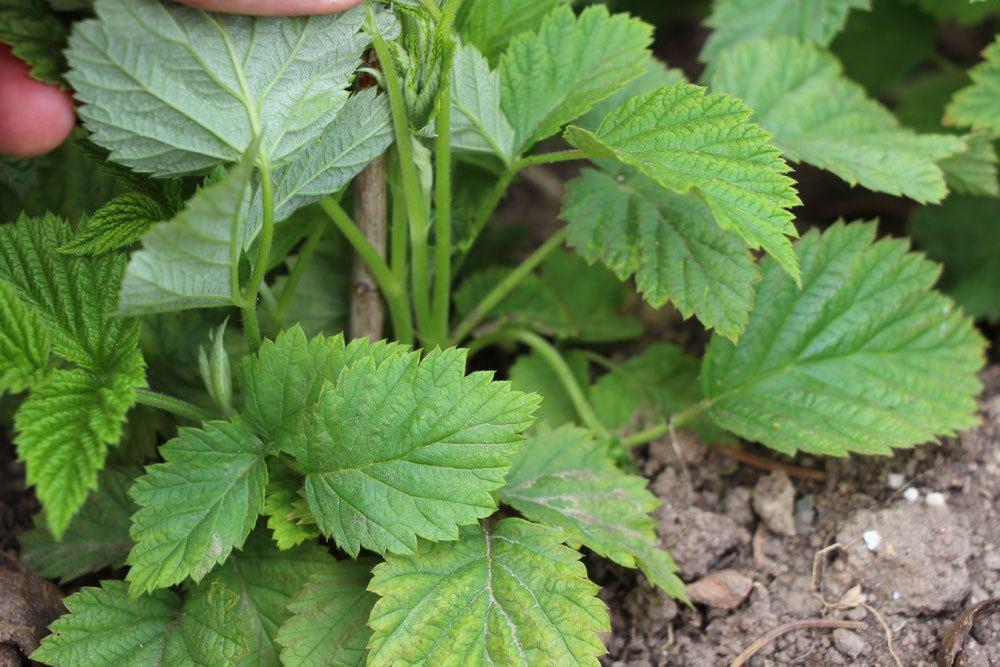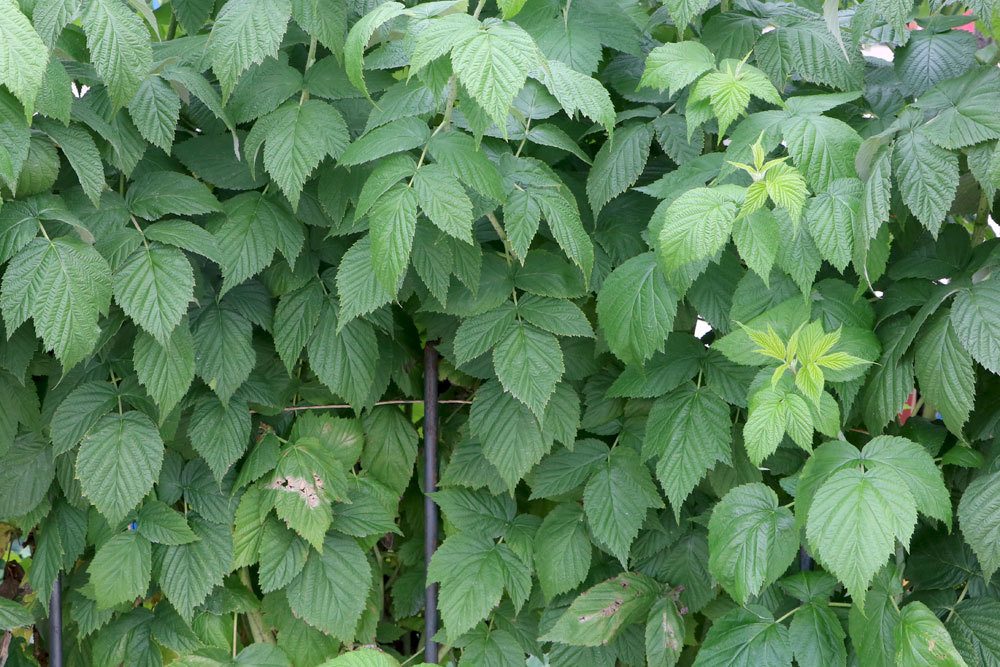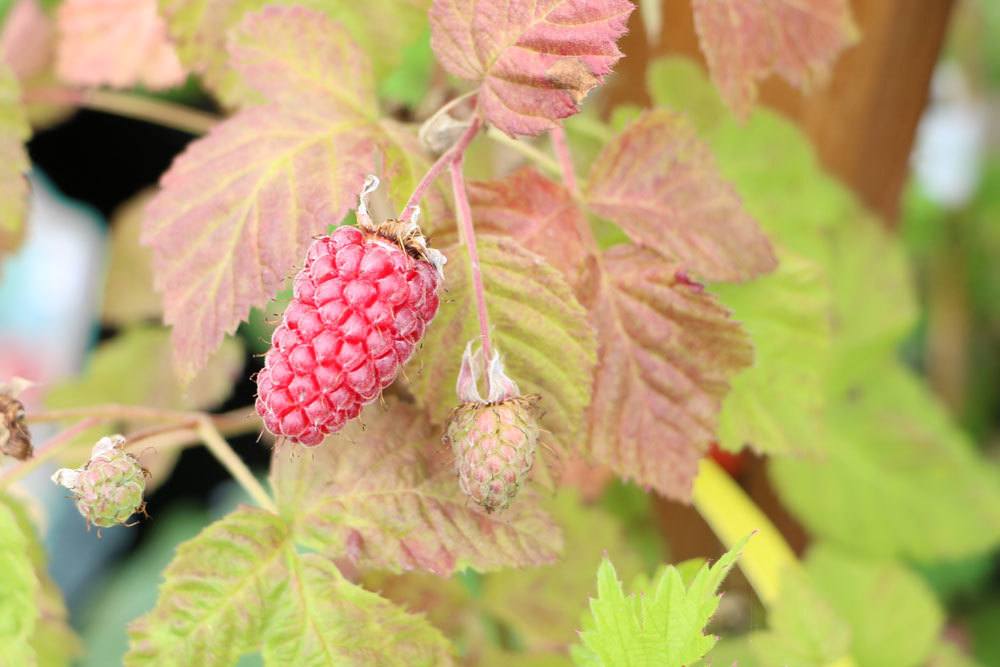Bright red raspberries (Rubus idaeus) are threatened by pests and various diseases, especially fungal infections. Both the aesthetics suffer, when stained or yellow leaves appear and stems take on an unhealthy color, as well as the yield.
Fungal infections are difficult to control and effective fungicides affect the environment and health. Besides a few biologically effective measures, “forewarned is forearmed”, because proper care prevents infection.
Contents
- 1 The diseases – the usual suspects
- 2 The fungi have struck – what now?
- 3 How does infection occur?
- 4 Diagnosis of cane disease – what now?
- 5 Prevention – so that the cane disease does not break out
- 6 Root rot – the culprit lies in hiding
- 7 Raspberry rust – over with beautiful green leaves
- 8 Gray and white spots on raspberries – Botrytis fruit rot or sunburn?
- 9 Author
The diseases – the usual suspects
A plethora of different types of fungi makes it difficult for the layman to identify the specific species. The most common are cane disease, raspberry rust and root rot, but botrytis fruit rot is not uncommon either. On the other hand, a curiosity are white spots on raspberries, which appear only in a sun-exposed location.
Quick and decisive action is essential in all fungal infections, otherwise the pathogens will spread uncontrollably and decimate the crop.
The fungi have struck – what now?
Raspberries face fungal attack in all parts of the plant. The damage patterns vary: Discoloration, spots and yellow leaves are the most common. Regardless of the species, first aid is needed quickly before the disease spreads.
Infected plant parts must be removed quickly. Rods are cut off at ground level, leaves are bent in the branching and already fallen foliage is removed. But all components in no case should not end up in the compost! – household waste is the right place.
Fungal spores survive extreme environmental factors, so the temperature development on the compost is not enough to kill them. Later reinfection by compost fertilization is possible in such cases.
Remember:
- always remove infected plant parts
- dispose with household waste, never use for composting
- Clean scissors with alcohol

How does infection occur?
Fungal spores are present everywhere in the air. However, they only settle in plant parts when they are given access. This happens with the help of animal pests such as the raspberry gall midge (Resseliella theobaldi) or through mechanical injury to plant parts.
Cracks in leaves and stems are caused by wind and harvesting as well as maintenance damage, into which the fungus then penetrates. Therefore, great caution is advised when working. Too close trimming, extreme locations or tall weeds increase the risk of infection due to persistent moisture. The roots are threatened by waterlogging. But voles and strong winds also cause injury.
Notice:
- Avoid extreme locations
- Wind injures the tender plants
- Prevent waterlogging
- control animal pests
- low stocking without weeds
- Rod disease
The cane disease – high crop losses are the rule
Large purple spots on the canes, yellow leaves, black spots and dying plant parts are unmistakable signs of cane disease. The different pathogens attack different parts of the plant. Predominantly only bearing rods are affected, the exception being Elsinoe veneta, which mainly attacks young rods. Didymella applanata and Leptosphaeria coniothyrium are more common.
While Didymella applanata mainly invades the cell walls in the upper part of the cane at the level of fruit development, Leptosphaeria coniothyrium attacks its host near the ground and produces the characteristic purple spots. Other pathogens of cane disease with a deviating disease pattern such as gray-black spots are Botrytis cinerea and Fusarium avenaceum with brown cane lesions.

Notice:
- cane disease is often characterized by purple spots and yellow leaves
- bearing rods are affected
- high yield losses
- Differentiation from root rot must be observed
Diagnosis of cane disease – what now?
In conventional cultivation, fungicides and copper are used for treatment. Both methods, which the nature-loving hobby gardener does not want to use in his garden. However, treatment with biological means is difficult and is limited mainly to the removal of affected plant parts and preventive measures.
Remove infested canes as soon as possible, as they support the multiplication of the fungi and do not produce any yield anyway. In addition, control of animal vectors such as the raspberry gall midge (Resseliella theobaldi) is advised. The latter bites the canes to suck the sugary plant secretion. In the process, fungal spores attached to the midge penetrate the raspberries.
Notice:
- remove infested canes
- combat animal vectors
Prevention – so that the cane disease does not break out
The most effective way is to combat the causes and create suitable growing conditions. Sufficient space between plants, a reduction of bearing rods to a maximum of eight and a minimization of new rods allow light and air to reach the stems: less breakage and faster drying take away the basis for fungi. Mulching prevents spores lying on the ground from finding their way onto healthy canes.
In addition, a biological decoction of field horsetail can control an incipient infestation or prevent infection.

Recipe:
Ferment one kilogram of fresh or dried, chopped herb in ten liters of water for three days. Then boil for about 30 minutes and spray cooled and diluted (1:5) regularly on all parts of the plant. The silicic acid supports the natural cell healing of the plant and forms a film on which fungi gain a poor foothold.
Notice:
- Field horsetail broth
- Mulching
- Reduction of the bearing rods
- Always remove old shoots down to the ground
A tip: there are resistant varieties in which the disease of the tail rarely occurs. All fall raspberries are also rarely affected by this disease.
Root rot – the culprit lies in hiding
In root rot, in contrast to cane disease, both the young and the bearing canes are affected. Yellow leaves, leaf necrosis and poor growth are signs of root rot. It occurs mainly on wet soils that do not have adequate drainage. Treatment is not possible: root rot leads to the death of the plant.
As with cane disease, there are more resistant varieties. But even these are powerless against waterlogging.

Notice:
- no waterlogging
- on loamy, moist soils use resistant varieties
- no curative means
Raspberry rust – over with beautiful green leaves
Raspberry rust is caused by a rust fungus (Phragmidium rubi-idaei). It causes characteristic rust-red spots on the leaves. In the initial stage, these are only visible on the leaf surface, whereas in the final stage, the underside is also covered with red spores.
Extreme infestation can cause yellow leaves and lead to premature leaf drop. This can be accompanied by a drop in yield.
In addition to removing affected plant parts, a reduction in nitrogen supply has a positive effect. A sparse stand that helps reduce moisture is also advised and can counteract raspberry rust in the future.
Remember:
- remove affected plant parts
- reduced nitrogen supply
- Reduce humidity of the leaves
Gray and white spots on raspberries – Botrytis fruit rot or sunburn?
Wet weather, little sun and overripe fruit provide a good foundation for Botrytis fruit rot (Botrytis cinerea). Fruits affected with the fungus are covered with white-gray fuzz and are not edible. Without decisive destruction of affected fruit, the fungus overwinters as gray-black spots on the canes and leads to reinfection the following year.
Biological treatment of fungal infections is possible only through plant strengthening and ideal growing conditions.

White spots on the fruit, which are not attributable to fungal attack, occur in unshaded crops. Direct midday sun does not like the former inhabitants of the forest edge and leads to sunburn. These white spots can be consumed without hesitation.
Notice:
- if there is no visible furry mold coating, the fruit is edible
- white spots are signs of harmless sunburn
- the plant suffers from the growing conditions: Shade is necessary

